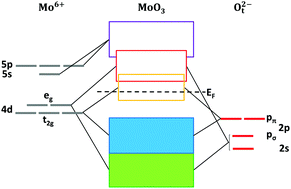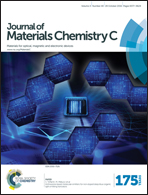Vacancy formation in MoO3: hybrid density functional theory and photoemission experiments
Abstract
Molybdenum oxide (MoO3) is an important material that is being considered for numerous technological applications, including catalysis and electrochromism. In the present study, we apply hybrid density functional theory to investigate O and Mo vacancies in the orthorhombic phase. We determine the vacancy formation energies of different defect sites as functions of the electron chemical potential, addressing different charge states. In addition, we investigate the consequences of defects for the material properties. Ultraviolet photoemission spectroscopy is employed to study the valence band of stoichiometric and O defective MoO3. We show that O vacancies result in occupied in-gap states.


 Please wait while we load your content...
Please wait while we load your content...